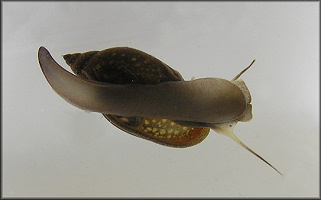Adaptation
Predatorial Avoidance in P. heterostropha
Physella heterostropha has several different ways to avoid falling prey to its primary predator the crayfish. Physella heterostropha’s three primary defense mechanisms include burial in substrate, floating on the top of the water and leaving the water altogether. A study done shows how P. heterostropha reacts under several different predator-prey conditions. The stimuli were rated from low-risk to high-risk. Low-risk included control water intermediate was water from tanks that contained foraging crayfish and the high-risk stimulus included crushed P. heterostropha and foraging crayfish. P. heterostropha reacted to low-risk stimuli by burying itself and reacted to the moderate and high risk stimuli by either floating to the top and/or leaving the water entirely (McCarthy, 2000).
Because calcium is hard for freshwater snails to obtain Physella heterostropha needs to figure out how to manage creating its shell to avoid predation by its two primary predators fish and crayfish. Depending upon which is a bigger threat it either creates a shell that is thinner with a narrow aperture or it creates a shell that is thicker with a wider aperture. A shell that is thicker with a wider aperture leaves them vulnerable to crayfish whereas a thinner shell makes P. heterostropha vulnerable to fish that can crush the shell (Washington State University Tri-Cities 2011). Perhaps this is in part why there was so much discrepancy between species and synonyms.
P. heterostropha floating on the water surface.
